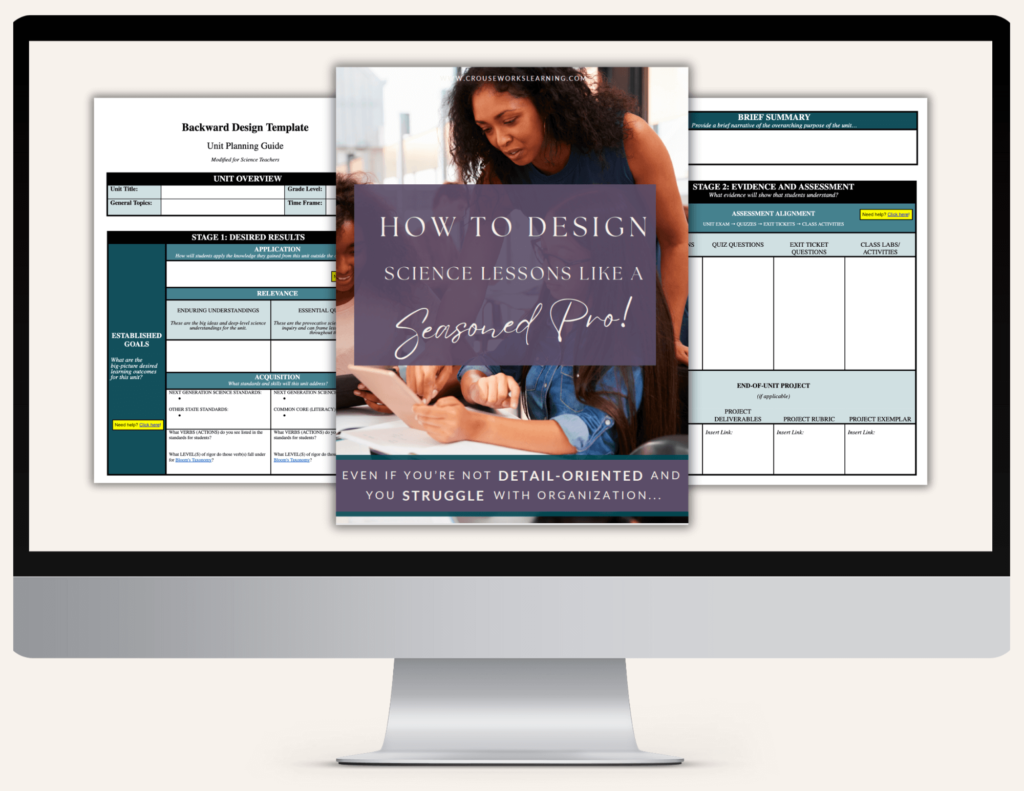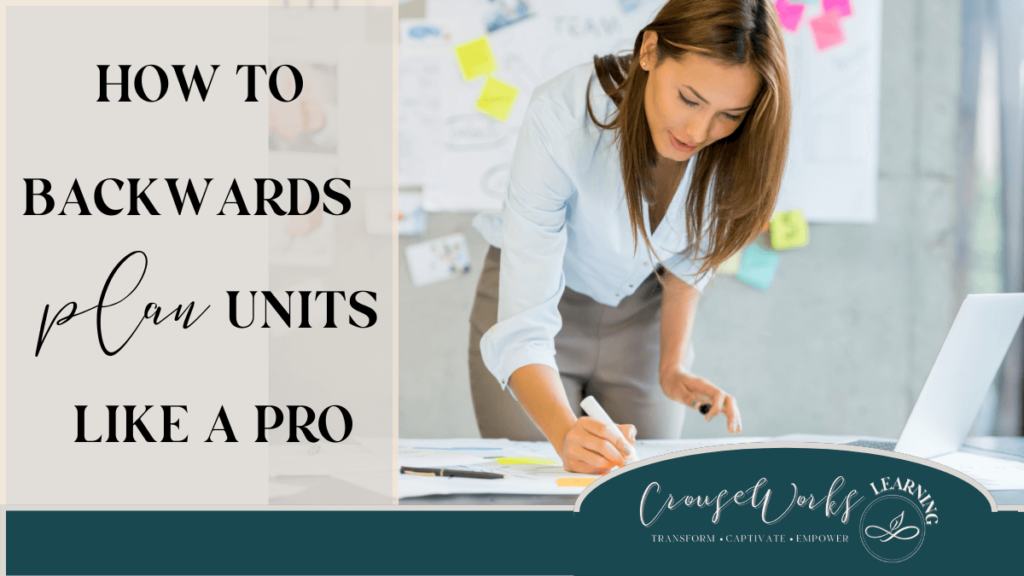Hey there, teacher friends! Today, let’s dive into a topic near and dear to our hearts – the art of planning our lessons.
How many of you have a love-hate relationship with lesson planning?
I know I do!
You see, designing science lessons is one of my MOST favorite parts of being a teacher. I love seeing creativity spilled out onto paper (or should I say a “google doc” 
When you’re lesson planning, it’s like you’re suddenly hit with all these incredible visions of things your students could make… all the places they could visit (even if just in their minds)… all the ways their perspectives could be broadened…
And for a brief moment, you’re living in this incredible world of science, curiosity, and imagination- where all things become possible in your classroom!

And yet…
Along with grading, lesson planning quickly becomes the #1 task you complete at home as a teacher.
All those late nights you spend on your couch, scrambling to put material together for the next day…
Lesson planning becomes the reason for your poor work-life boundaries. And it takes a toll on you after a while. It takes a toll on your health, your energy for your family, and your overall contentment in teaching.
And, not to mention, when your lessons don’t go exactly as planned the next day (and suddenly that beautiful bubble world of science pops right before your eyes!), it can become pretty discouraging…
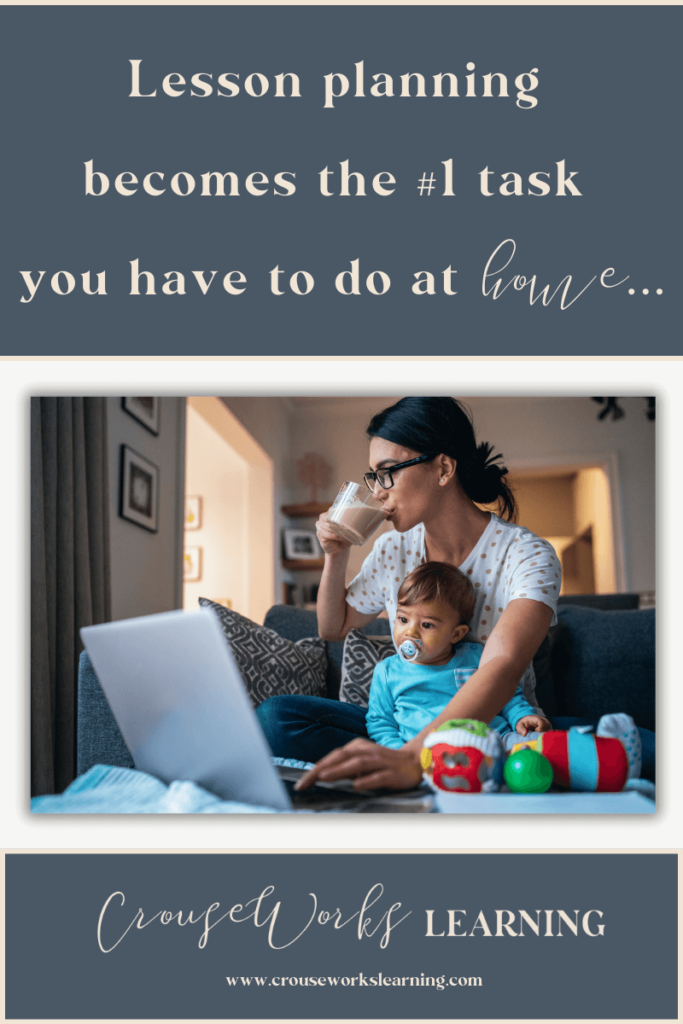
In fact, I remember for a long time feeling really crazy when it came to lesson planning. Like, “How can something I enjoy so much also makes me feel so drained?!” and “Why on earth does it take hours and I mean hourrrsss to plan a single lesson?!”
And I stayed feeling crazy like that for a long time until… one day when I had a conversation with a teacher friend of mine that changed everything…
So, one day (years ago), when I was feeling particularly discouraged at my inability to time-manage and have good work-life boundaries as a teacher (we are so hard on ourselves, aren’t we?!)… one of my teacher friends walked into my classroom.
Now, let’s back up for a moment so I can give you some context for this story.
Have you ever seen Abbott Elementary? Have you ever seen the way Janine looks at Barbara? Yeah so, that’s basically exactly how I looked at this teacher friend of mine.
You see, this teacher friend of mine was named Sara Jean, and she was literally a masterclass teacher from all angles. Whether it was designing spiraling thematic units to her out-of-this-world lesson sequences to her intrepid classroom management skills that could calm even the sourest of teenagers… every minute of Sara Jean’s classes was intentionally planned out and directed at holistically developing her students into the next generation of critically informed citizens of the world.
I mean, talk about having a jaw-drop moment every time you walked into her class. Truly- if window shopping was a thing in teaching, let’s just say it’d be Christmas time, and Sara Jean would have all heads pressed against the glass of her classroom!

Sheryl Lee Ralph and Quinta Bruson on ‘Abbott Elementary’ | Credit: Gilles Mingasson/ ABC
So one day, Sara Jean was casually popping by to say goodbye on her way out to her car.
And on that day, I was both delighted to see her and also a bit mortified (given the state of my classroom).
Immediately, I began to scramble around the room, trying to quickly stuff my kids’ leftover snack wrappers into my trash bin and clean off the inappropriate writing on my desks- praying that Sara Jean won’t notice too much of the mess (and my clear lack of classroom management skills at the time!)
So, Sara Jean came in and she propped herself up on a lab stool. And we got to talking…
Now, I don’t know what it is about those “end-of-the-day” talks with your teacher colleagues- when the sun is setting, and you’ve both just been down in the trenches the whole day- without support, without much food and without the ability to use the bathroom for hours at a time- and truths just comes out.
And I remember saying to her in that moment, just exasperated, “How do you do it, Sara Jean? How in the world do you put together supreme lessons and have all the students love you and you STILL also find time to shower and eat dinner and have a family and smile?! How??”
And you want to know what she said in response to that?
Sara Jean said, “Claire, I don’t.”
She continued, “No teacher does. For every 1 hour of effective instruction, it takes a minimum of 4-5 hours of lesson planning. It’s like being an event planner every single day. You’re not crazy. I’m stretched just as thin as you are.”
And for some reason just hearing her say that was a huge tidal wave of relief to me. It was like all of a sudden, I realized- Sara Jean didn’t have some concealed bag of magic tricks. She wasn’t gifted with some natural, unattainable talent that I could only dream of. She was barely holding herself together, too!
Now, if that wasn’t inspiring enough to hear, what she said next was even more profound…
Sara Jean then went on to say, “But all that to say, Claire, remember you want to be the tortoise in all this- not the hare. Go slow first so you can go faster later on. Take your time- build strong foundations in your classroom- set systems up the right way. It will be a tough year, but you can do it. You can do anything for a year. And you will save time in the LONG RUN if you set things up the correct way now.”
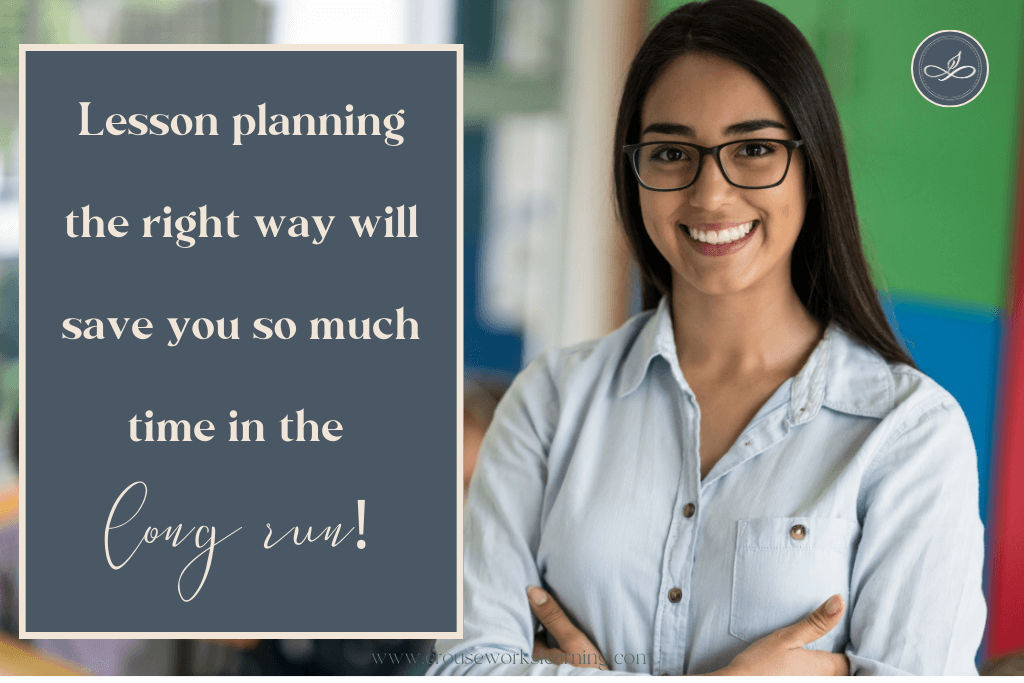
So, teacher friend, I say all that to you because if you are frustrated at how much time it takes to put lessons together, you are not alone! You are not crazy. It DOES take an incredible amount of time to put together an effective lesson. There is no way of getting around it.
HOWEVER, like Sara Jean said, where you CAN save time is by lesson planning the CORRECT way first.
And that is why I’m writing this blog post!
This blog post is NOT to provide you with a simple, quick fix for lesson planning (how I wish I could give that to you!). Instead, it is to help you to lesson plan the right way so that you WILL save a considerable amount of time in the long run.
So, if you’re wondering, “Claire, how do you lesson plan the right way?” Well, let me show you!
Let me introduce you to the concept of backward design planning.
Now, I know what you might be thinking, “Another lesson planning method? Do I really need this?”
Trust me, folks, backward design planning is not just another educational trend. It’s a powerful lesson planning strategy that is here to stay and will talked about for years, and I mean yearssss, as the WAY to structure your units and lessons.
It’s an incredible teaching tool that can transform your high school science classroom in a snap, making your teaching considerably more effective and your students way more engaged and successful.
So, what exactly is backward design planning?
At its core, backward design planning is a method that starts with the end in mind. Instead of beginning with a textbook or a set of activities, you start by identifying your learning goals and objectives. What do you want your students to know and be able to do by the end of the lesson or unit? Once you’ve set these goals, you work backward to create the activities, assessments, and instructional materials to help your students achieve those objectives.
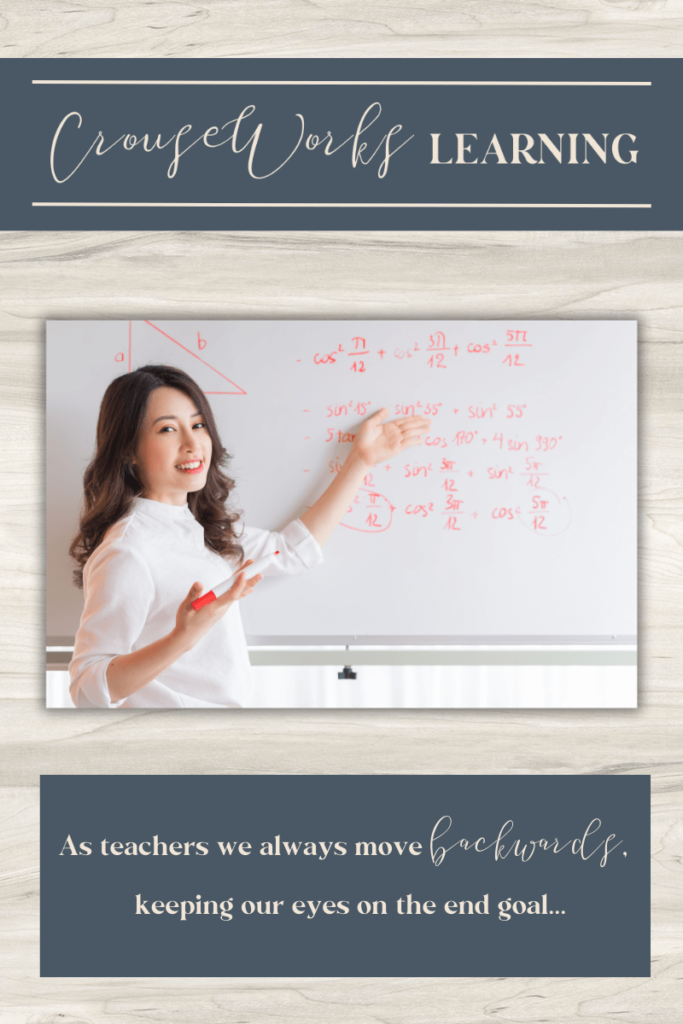
Backward design planning is great because it forces you to be crystal clear about what you want your students to learn. It helps you prioritize essential concepts and skills, ensuring your teaching is focused and purposeful.
It is also student-centered in that it forces you to shift the focus from what you teach to what your students will learn. Thus, this student-centered approach empowers them to take ownership of their learning, fostering a deeper understanding of the subject matter.
Not to mention, backward design ensures that your assessments and activities are aligned with your learning objectives. And this coherence in your curriculum helps students see the relevance and progression of the content, making it easier for them to grasp complex scientific concepts.
So, how can you get started with backward design planning?
Well, lucky for you, I have a FREE guidebook that will do just that and it’s called “How To Design Science Lessons Like a Seasoned Pro!”
It’s an all-in-one FREE guidebook that walks you through my best-kept strategies for planning your units and individual lesson plans.
From calendar templates to guiding questions to bonus lesson planning resources, this guidebook is your one-stop shop for designing lessons that will last you for the rest of your teaching career!
And the best news of all is it’s FREE! So download the guidebook now!

